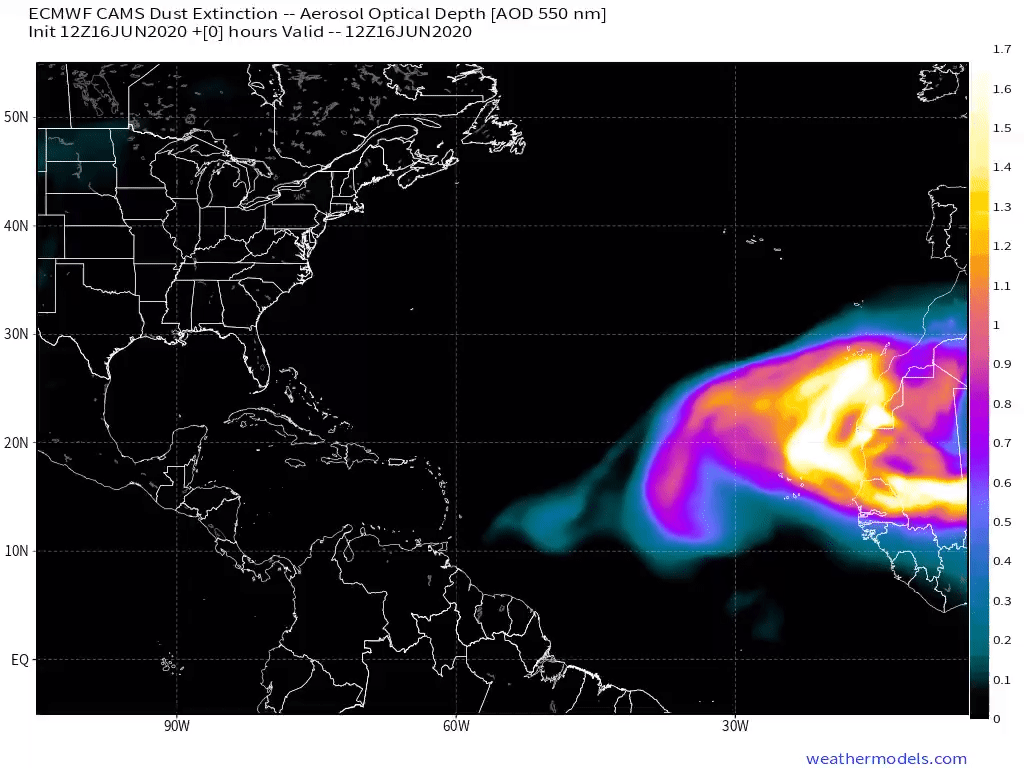Meteorology is all about acronyms from model names to different phenomena. So, you have to become familiar with the jargon to make sense of what a professional is saying or read a weather discussion. The Sahara Desert is vast and very dry covered in sand particles and dust that can easily be picked up by the prevailing winds across the African continent at tropical & subtropical latitudes.

And currently we have a Saharan Air Layer (SAL) extending out in the Atlantic off the continent. The sand is apparent but there is also a milky hue to the atmosphere extending many hundreds of miles west of the coast. Of course we have weather models that can assimilate that dust data from satellites and incorporate it into forecasts. The ECMWF model contains an atmosphere composition component to forecast aerosols, particulates, ozone and a bunch of other interesting things.

And, there you go. The Aerosol Optical Depth at 550 nm matches the satellite image. I generated an hourly animation and saved to Twitter so not to fill up your inbox.


The SAL is very dry and warm at 850 hPa to 700 hPa so it generally is devoid of convection. There may still be some clouds but the lack of instability limits any storms. So, any tropical waves will need to create a cocoon or favorable environment around them which indeed happens. The atmosphere can be moistened in a few days as the tropical wave heads westward and the SAL is eventually broken down.
Alternatively, the tropical wave’s circulation protects itself from the SAL until it may eventually ingest the dry air and kill itself. The environment in the central and eastern Atlantic in the main development region is usually inhospitable for tropical cyclone genesis once you get past the rather tepid Sea Surface Temperatures (SST).
June isn’t the month for African wave development in the Atlantic BUT sometimes these waves head across Central America in the Eastern Pacific where they find much more favorable upper-level winds and warmer water for development. So far 2020 isn’t delivering at all in the EPAC.


